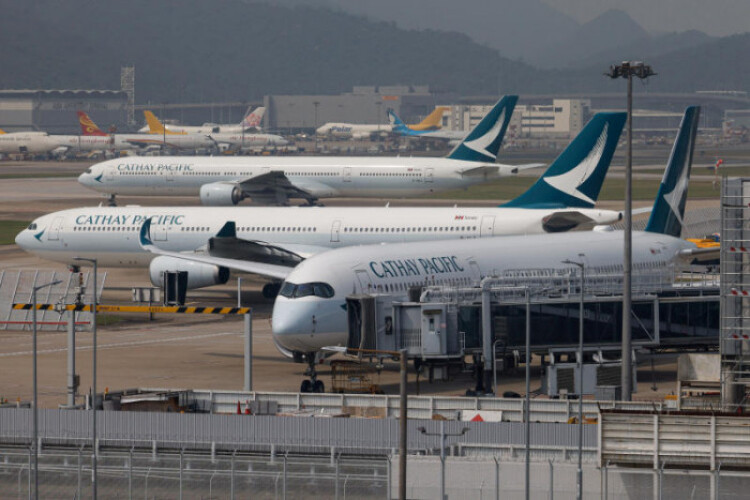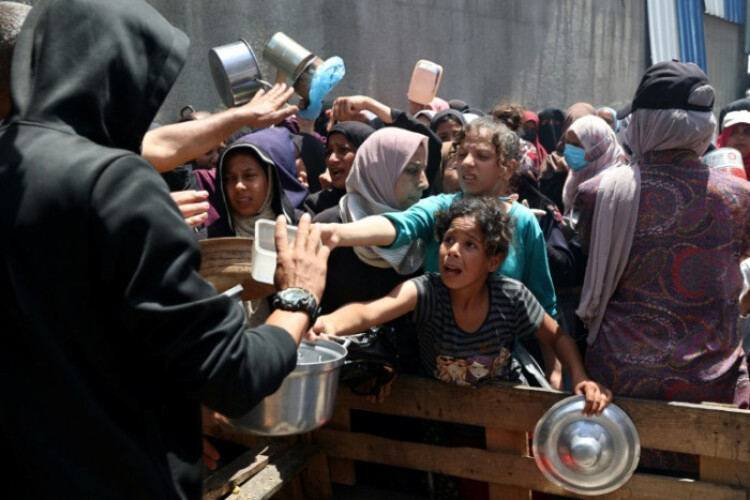
A flight attendant with Cathay Pacific Airways mistakenly served a glass of white wine to a three-year-old boy seated in business class last month, raising concerns over the health risks caused by a mix-up of wrong drinks and food for passengers.
The South China Morning Post explores how easily a mix-up of drinks can happen during flights and outlines the steps passengers can take to protect themselves from accidentally consuming food that may affect their health.
1. How did a three-year-old get served wine?
A family of three boarded Cathay flight CX255 from Hong Kong to London on the night of April 24, with each of them occupying a business class seat: the boy by the window and his father next to him in the aisle. A crew member mistakenly served the boy a glass of wine instead of water that he ordered.
The boy took a sip and said the water was too sour. Another crew member apologised and replaced the drink, but the parents escalated the matter to a senior crew member, who then paged a French doctor on board. The doctor told the parents the child would be fine, adding that children as young as five could take alcohol in her country.
The senior crew member also sought ground-based medical advisory service via in-flight Medlink, and said no further advice was given except to give the boy more water and monitor the child. So far, the child has not reported any discomfort or sickness.
The carrier offered to refund the child's ticket with three one-class upgrade vouchers and cover the costs of any incident-related medical check-ups. But the parents were not satisfied, expressing concern over whether the alcohol sip her son took would result in long-term health issues.
More than two weeks after the incident, the parents, both aged 35, have not sought a medical check-up for the child.
2. Is the incident a one-off?
A Cathay flight purser, who spoke on condition of anonymity, said such mistakes could happen easily in business class, and it was unfortunate that the mix-up happened to a three-year-old child on that occasion.
"I can say almost 99% of this kind of mistake happened in business class, which provides personal service for passengers. The crew receive orders and then prepare the drinks in glasses altogether on a tray in the galley for different passengers," she said.
"This is when the mistake tends to happen as different glasses of drinks are put on the tray for different passengers.
"If the crew don't mark down which drink for which glass and for which seat, they easily mix up the drinks and serve the wrong ones to passengers."
She said this type of mistake rarely happened in economy class as passengers were served drinks on a trolley in paper cups one after another.
3. What leads to mix-ups for in-flight drinks?
The purser said the most common mix-up was crew members mistaking Perrier water with normal water, and white wine for apple juice.
Another common example was the mix-up of Coke Zero and Diet Coke. Coke Zero has a blend of aspartame and acesulfame potassium as sweeteners while Diet Coke only has aspartame.
"Some passengers ordered Diet Coke but were given Coke Zero instead. Such a mistake can be serious as some people may be allergic to the sugar substitute in Coke Zero," she said.
"But many crew members can't tell the difference and don't have an understanding of the health risks."
4. What can you do if a drink mix-up poses a health risk?
Dr Herbert Kwok Wang-chun, vice-president of the Hong Kong Public Doctors' Association, said the health risk of the three-year-old boy was low, if he had taken a small sip.
"It depends on how much alcohol he drank. If the intake is high, it will depend on whether he suffers any discomfort such as falling unconscious, dizziness or vomit. Since the boy was fine during the journey, the risk of alcohol poisoning seems low," he said.
"For anyone who mistakes alcohol, it's better for them to spit it out as much as they can and drink a lot of water to dilute it"
For passengers who have food and drink allergies or alcohol intolerance due to medication intake, Kwok advised them to drop a note to airline staff about their allergies when booking air tickets, and also bring their allergy medication on board, including adrenaline syringes supported by a medical certificate if necessary.
"Those having an allergic reaction can show symptoms such as skin rashes, breath difficulties, nausea or diarrhoea which may require adrenaline injections in some serious cases. For passengers with allergies, they are advised to bring along their medication and if necessary adrenaline syringes for injections abroad," he said.
Kwok said in urgent cases, the crew would alert the pilot who would decide if he needed to divert to land at another site for a medical emergency.
5. How to prevent similar incidents from happening?
According to the purser, the company has scrambled to hire inexperienced cabin crew to meet its expansion target without sufficient training.
"Many new flight attendants can serve the business class, and nowadays, those having two years of experience can easily be promoted to the ranks of pursers, unlike in the past when it took many years for a crew member to get the promotion," she said.
"Also, many crew members don't care to distinguish the drinks by marking it down on napkins.
For myself, I will take the extra step to examine them carefully and even smell them to avoid making the mistake. But most of the new crew don't bother with this protocol."
The South China Morning Post explores how easily a mix-up of drinks can happen during flights and outlines the steps passengers can take to protect themselves from accidentally consuming food that may affect their health.
1. How did a three-year-old get served wine?
A family of three boarded Cathay flight CX255 from Hong Kong to London on the night of April 24, with each of them occupying a business class seat: the boy by the window and his father next to him in the aisle. A crew member mistakenly served the boy a glass of wine instead of water that he ordered.
The boy took a sip and said the water was too sour. Another crew member apologised and replaced the drink, but the parents escalated the matter to a senior crew member, who then paged a French doctor on board. The doctor told the parents the child would be fine, adding that children as young as five could take alcohol in her country.
The senior crew member also sought ground-based medical advisory service via in-flight Medlink, and said no further advice was given except to give the boy more water and monitor the child. So far, the child has not reported any discomfort or sickness.
The carrier offered to refund the child's ticket with three one-class upgrade vouchers and cover the costs of any incident-related medical check-ups. But the parents were not satisfied, expressing concern over whether the alcohol sip her son took would result in long-term health issues.
More than two weeks after the incident, the parents, both aged 35, have not sought a medical check-up for the child.
2. Is the incident a one-off?
A Cathay flight purser, who spoke on condition of anonymity, said such mistakes could happen easily in business class, and it was unfortunate that the mix-up happened to a three-year-old child on that occasion.
"I can say almost 99% of this kind of mistake happened in business class, which provides personal service for passengers. The crew receive orders and then prepare the drinks in glasses altogether on a tray in the galley for different passengers," she said.
"This is when the mistake tends to happen as different glasses of drinks are put on the tray for different passengers.
"If the crew don't mark down which drink for which glass and for which seat, they easily mix up the drinks and serve the wrong ones to passengers."
She said this type of mistake rarely happened in economy class as passengers were served drinks on a trolley in paper cups one after another.
3. What leads to mix-ups for in-flight drinks?
The purser said the most common mix-up was crew members mistaking Perrier water with normal water, and white wine for apple juice.
Another common example was the mix-up of Coke Zero and Diet Coke. Coke Zero has a blend of aspartame and acesulfame potassium as sweeteners while Diet Coke only has aspartame.
"Some passengers ordered Diet Coke but were given Coke Zero instead. Such a mistake can be serious as some people may be allergic to the sugar substitute in Coke Zero," she said.
"But many crew members can't tell the difference and don't have an understanding of the health risks."
4. What can you do if a drink mix-up poses a health risk?
Dr Herbert Kwok Wang-chun, vice-president of the Hong Kong Public Doctors' Association, said the health risk of the three-year-old boy was low, if he had taken a small sip.
"It depends on how much alcohol he drank. If the intake is high, it will depend on whether he suffers any discomfort such as falling unconscious, dizziness or vomit. Since the boy was fine during the journey, the risk of alcohol poisoning seems low," he said.
"For anyone who mistakes alcohol, it's better for them to spit it out as much as they can and drink a lot of water to dilute it"
For passengers who have food and drink allergies or alcohol intolerance due to medication intake, Kwok advised them to drop a note to airline staff about their allergies when booking air tickets, and also bring their allergy medication on board, including adrenaline syringes supported by a medical certificate if necessary.
"Those having an allergic reaction can show symptoms such as skin rashes, breath difficulties, nausea or diarrhoea which may require adrenaline injections in some serious cases. For passengers with allergies, they are advised to bring along their medication and if necessary adrenaline syringes for injections abroad," he said.
Kwok said in urgent cases, the crew would alert the pilot who would decide if he needed to divert to land at another site for a medical emergency.
5. How to prevent similar incidents from happening?
According to the purser, the company has scrambled to hire inexperienced cabin crew to meet its expansion target without sufficient training.
"Many new flight attendants can serve the business class, and nowadays, those having two years of experience can easily be promoted to the ranks of pursers, unlike in the past when it took many years for a crew member to get the promotion," she said.
"Also, many crew members don't care to distinguish the drinks by marking it down on napkins.
For myself, I will take the extra step to examine them carefully and even smell them to avoid making the mistake. But most of the new crew don't bother with this protocol."










